Abutilon are a large group of tropical shrubs grown for their colourful, bell-shaped or lantern-like flowers. Commonly known as Indian mallow, flowering maple and Chinese lanterns, abutilon come from the tropical and sub-tropical regions of Asia, Africa, Australia, North and South America and most flower during July to September.
The genus’s heyday was during the Victorian and Edwardian eras when they were widely grown both in large private gardens and in public parks, used as accent plants or as the centrepieces of elaborate bedding schemes. Of the estimated 200 species, very few have the decorative qualities that would appeal to gardeners. Several of the showiest hybrids come from a handful of South American species (some of which are now recognised in the related genus Corynabutilon). In the wild, they tend to be found growing in rich, moist soil under the dappled shade of tall trees.
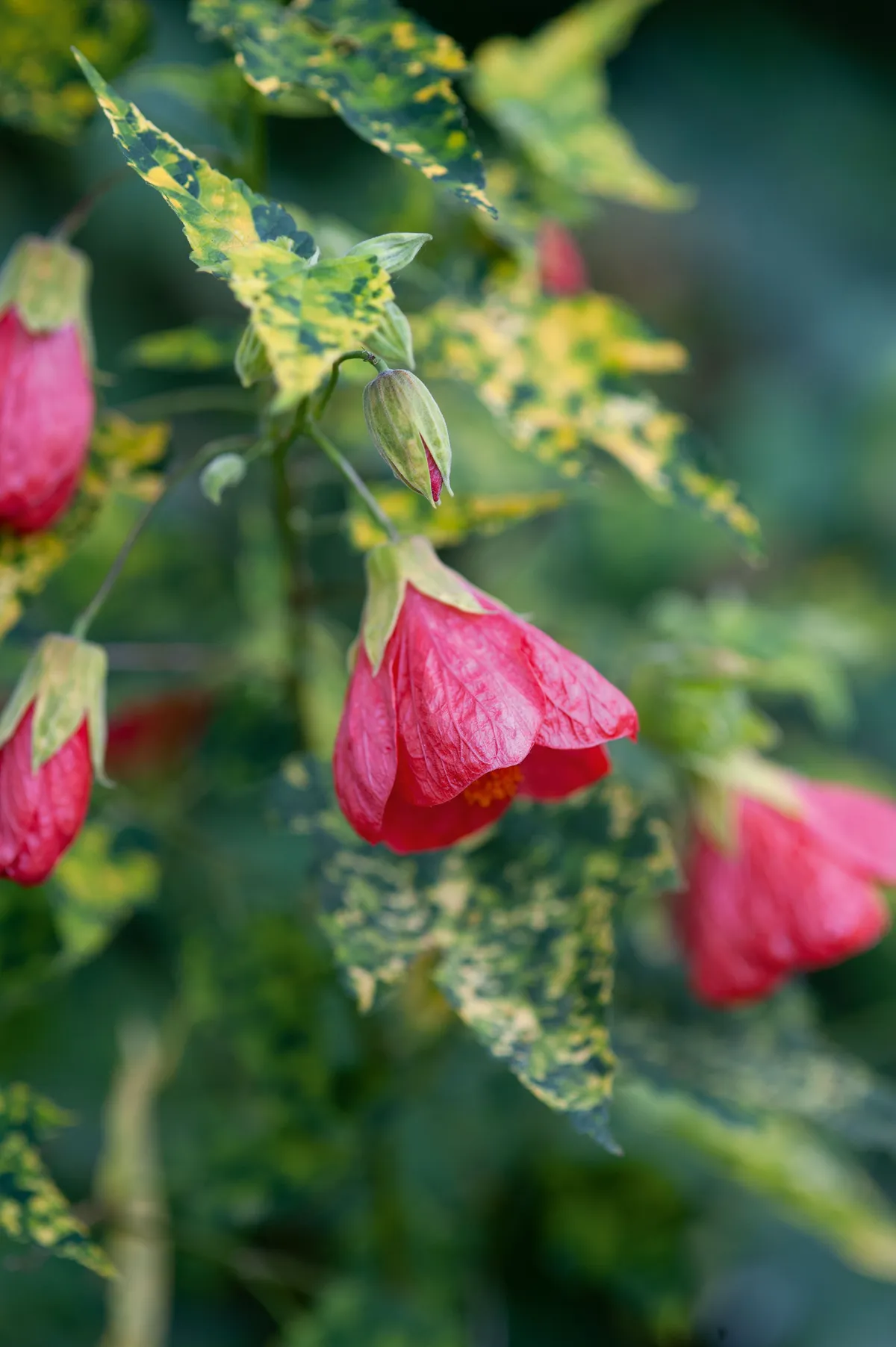
How to grow abutilon
Best conditions for growing abutilon in the UK
How you grow your abutilons will largely depend on how mild your climate is or how sheltered the site. In the UK, most abutilons are only reliably hardy in coastal regions or within the shelter and warmth of a city centre garden. If you can grow them in the garden, choose a bright position that has occasional shade. Although they will grow in full sun, abutilons are best in dappled shade in rich soil. The leaves of some variegated cultivars can be scorched by too much sunlight.
Be prepared for them to be lost in the occasional harsh winter that will still arrive. Traditionally, abutilon have been grown as conservatory or house plants or treated as annual bedding plants.
Feeding and watering abutilon
To produce so many flowers, a plant needs a lot of energy so incorporate plenty of manure or compost into the soil before planting and mulch every autumn with compost. Water regularly when the plant is growing and flowering but reduce this during the winter so that the soil is barely moist.
Growing abutilon in pots
Grown in pots they need regular watering and feeding. When growing abutilons in pots use a loam-based compost, and during the growing season feed twice a month with a balanced liquid fertiliser.

Abutilon pests and diseases
Abutilons that are grown outdoors are trouble free and not susceptible to any pests. Those that are grown in the conservatory are prone to the
usual range of conservatory pests, particularly scale insects and red spider mite. You can identify red spider mite from mottling on the leaves and, in heavy infestations, a fine, silky web that covers the foliage. Control it from early spring by introducing predatory mites. Scale insects, which look like small blisters on the underside of leaves, are less of a problem but they should be removed by hand as soon as you spot them. Ladybirds will eat them and at the same time deal with mealybugs, which are a tiny white insect that sucks on the sap of the plants.
How to prune abutilon
Abutilons respond well to regular pruning and can be pruned to fit any space. Left unpruned some abutilons will grow up to 4m tall with most of the flowers out of sight at the top of the stems. To encourage more compact plants with more flowers, prune the plant hard from late April to early May, cutting stems to two or three buds from the ground. This will encourage new growth that should be covered in flowers by mid-August.
Plants that are grown in pots during the summer and overwintered in a cool greenhouse can be cut back in late autumn and stored in a semi-dormant state until new growth appears in the spring. In a heated greenhouse or conservatory, prune as necessary, ideally in early spring, to control the size and shape of the plant.
How to overwinter abutilon
Abutilon are relatively tender and will need overwintering in a greenhouse.
How tall are abutilon?
From 30cm to 4m.
The best abutilon to grow in your garden
Abutilon megapotamicum ‘Big Bell’
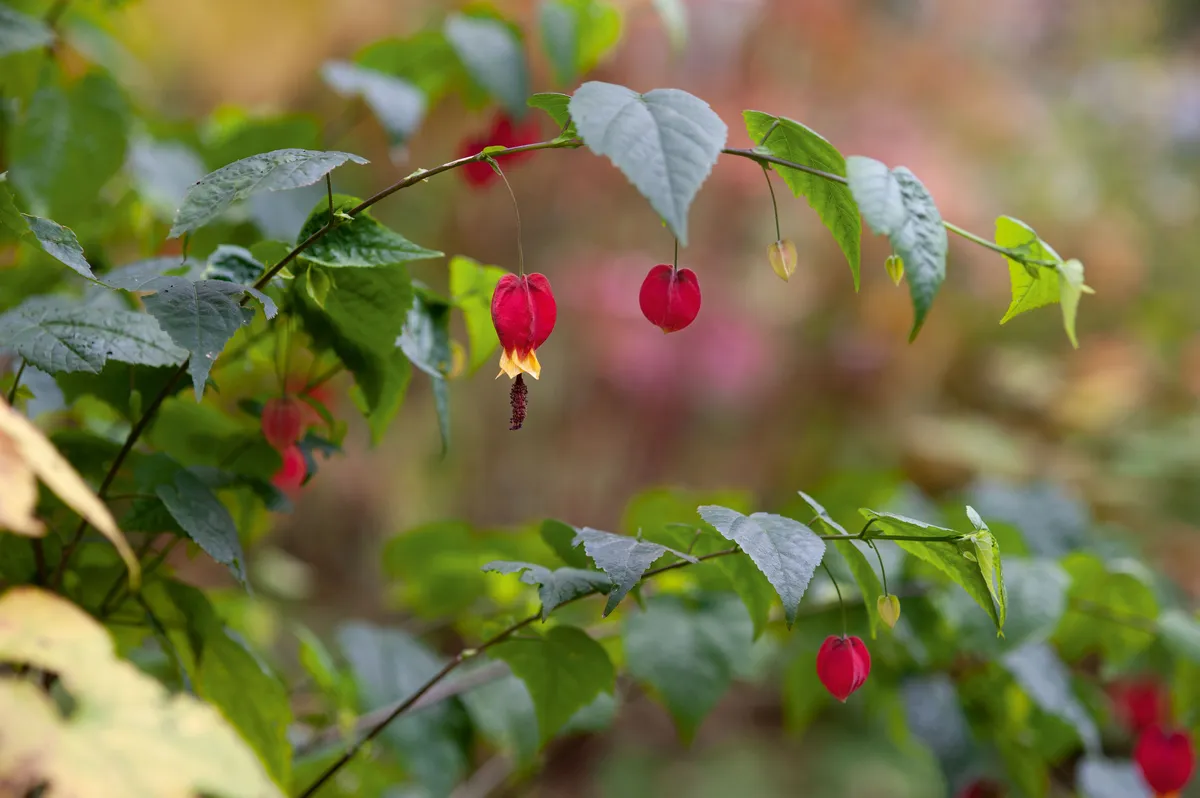
A cultivar of the trailing abutilon from Brazil and Chile. The long, arching stems can be tied into a trellis, pergola or wall, or they can be allowed to cascade over a pot. Flowers from midsummer through to autumn. 3m x 2m. RHS H2, USDA 9a-11†.
Abutilon ‘Citron’
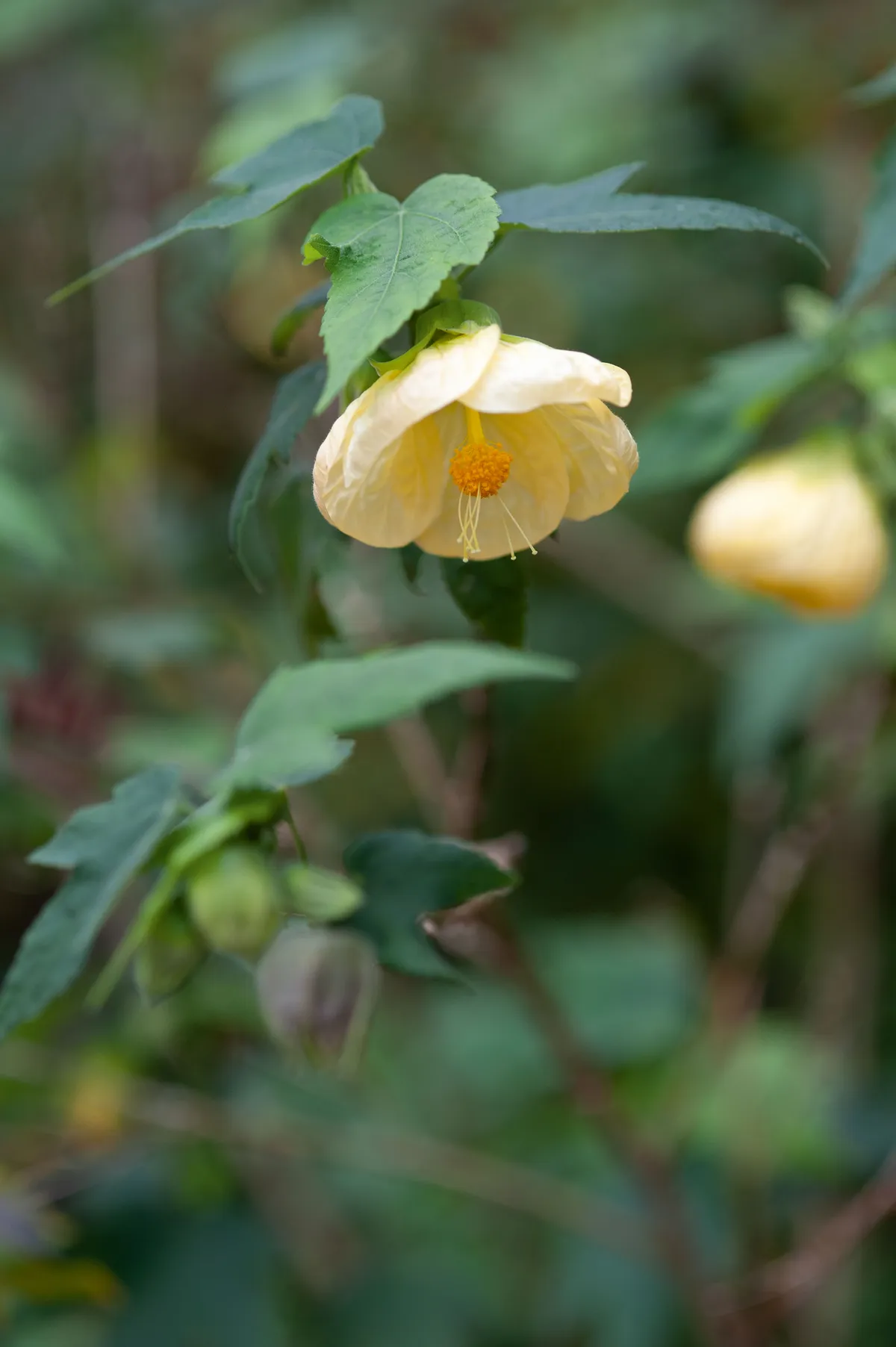
One of several hybrids introduced by National Collection holders Teri and Eric Turner before retiring from their nursery, T3 Plants. A floriferous plant blooming from late spring, the flowers are a wide bell shape with pale-lemon petals. 1m x 50cm. RHS H2, USDA 9a-11.
Abutilon ‘Snowfall’
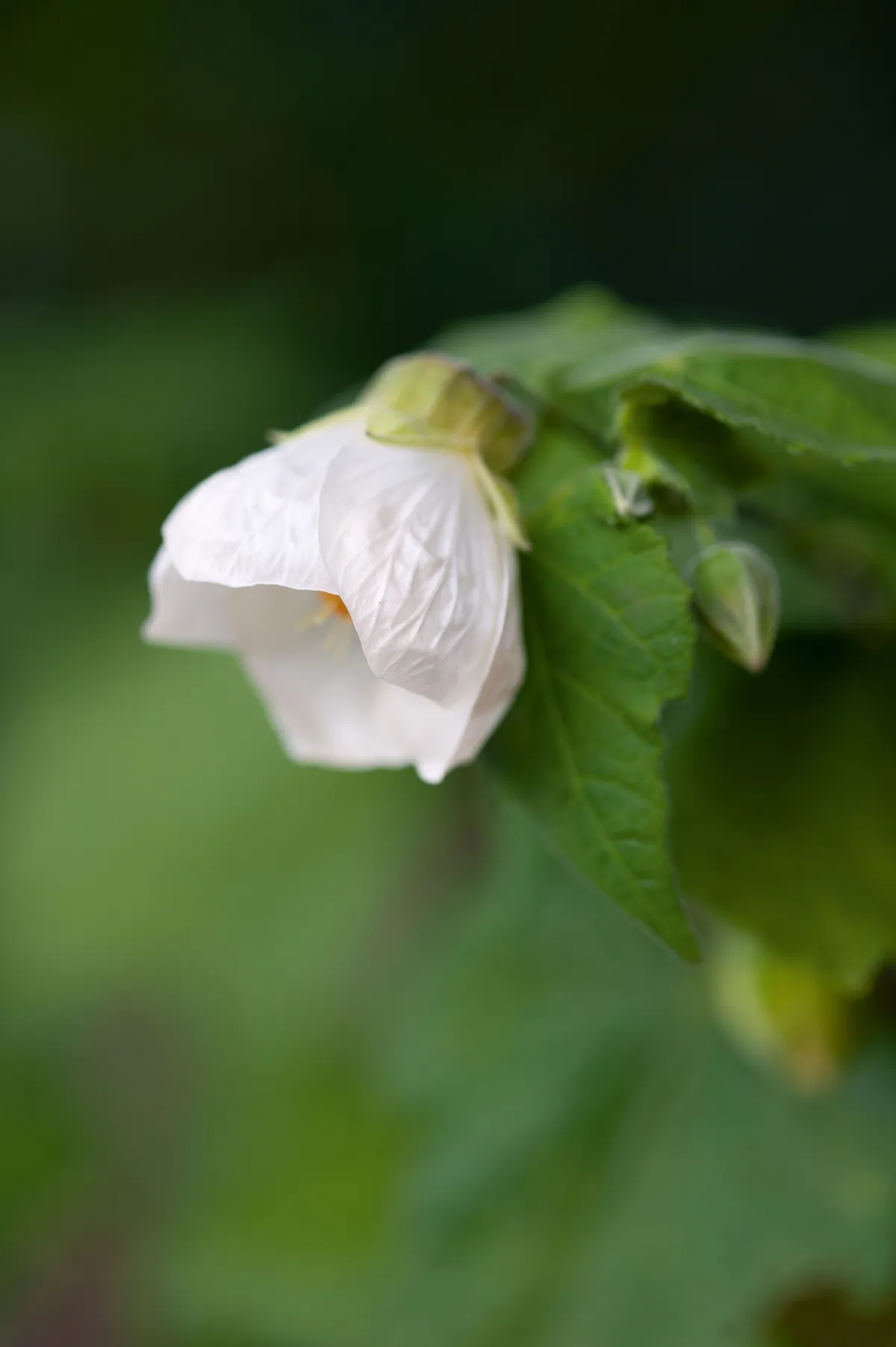
Of all the white-flowered abutilons, this is the one that probably has the most sparklingly clean, white flowers; their colour enhanced by their velvety bright-green leaves. Blooms from June to September. 80cm x 50cm. RHS H2, USDA 9a-11.
Abutilon ‘Julia’
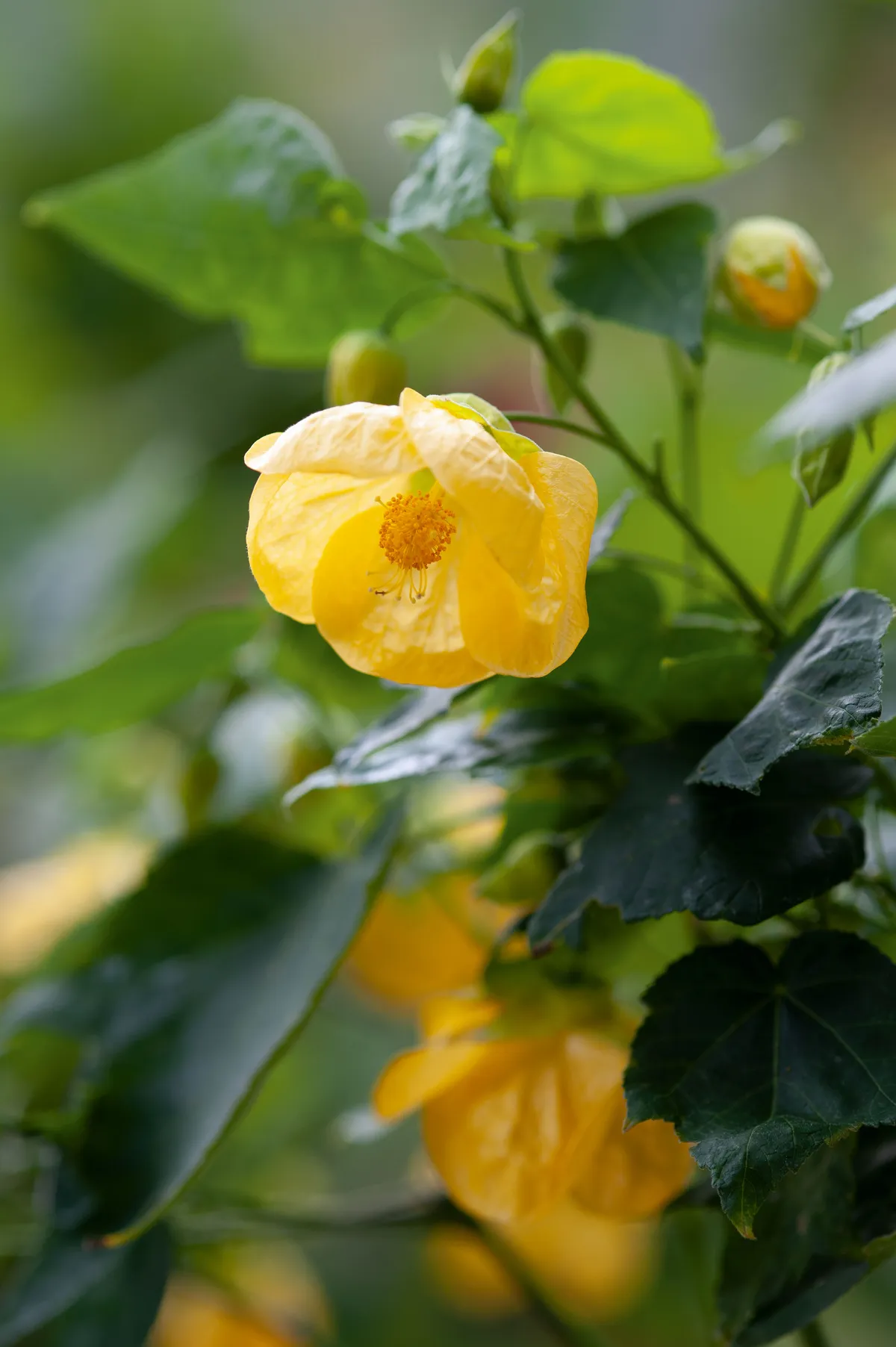
The semi-evergreen, bright-green foliage is a perfect background for the profusion of lemon-yellow bells. The shrub has an upright habit and is often grown as a single-stem standard. Flowers June to September. 1m x 70cm. RHS H2, USDA 9a-11.
Abutilon ‘Cannington Carol’

One of several abutilons, all with variegated foliage, that were developed at Cannington College, Somerset, in the 1970s. Its dark-green leaves are mottled with yellow and cream, some to such an extent that they are entirely cream coloured. 80cm x 50cm. AGM. RHS H2, USDA 9a-11.
Abutilon megapotamicum ‘Pink Charm’

A modern cultivar with long, willowy stems that are easy to tie against a trellis or fence. The flowers dangle from the stems and are a subtle combination of dusky-pink calyces and soft-pink petals. 2m x 2m. RHS H2, USDA 9a-11.
Abutilon ‘Souvenir de Bonn’
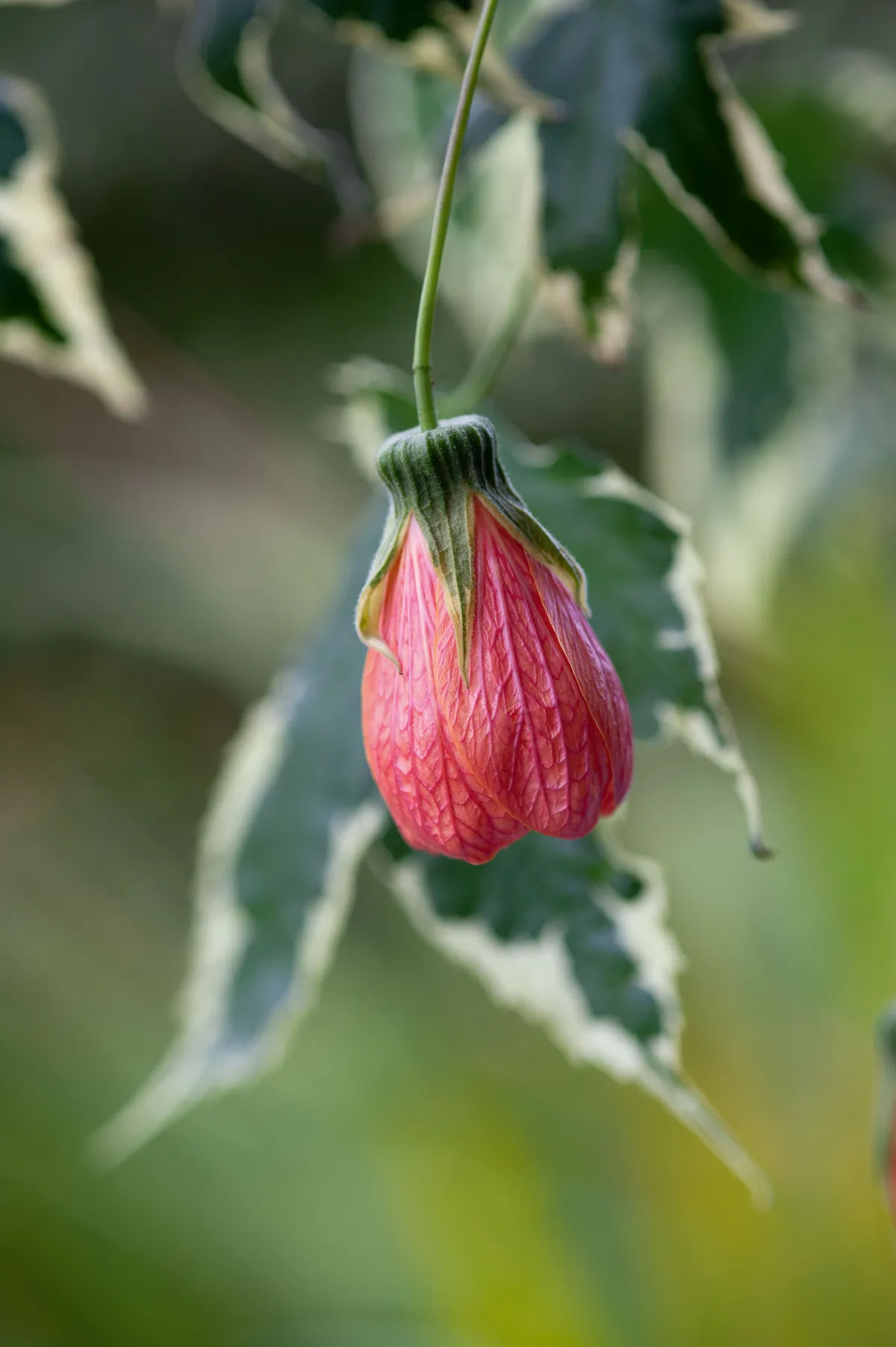
The coral-coloured flowers are 6cm long, but it’s the bold foliage that sets this cultivar apart. The large leaves resemble those of maples and have a wide margin of bright creamy-white. 1.5m x 1m. AGM. RHS H2, USDA 9a-11.
Abutilon ‘Kentish Belle’
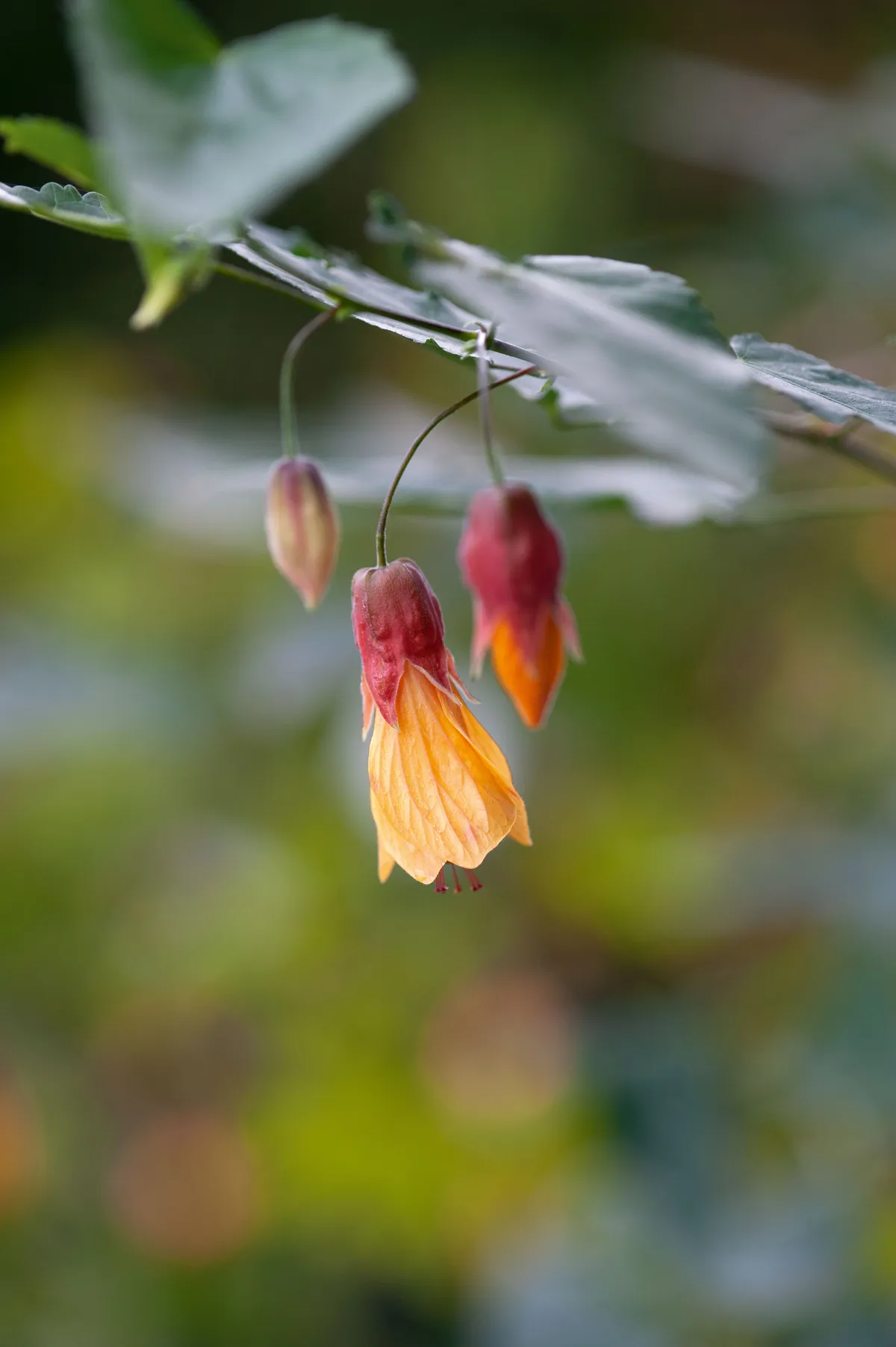
Bred at Hever Castle, Kent, in the 1950s, this is a long-flowering hybrid – from May to October – that has remained popular since its introduction. One of the hardiest of the family. 2.5m x 2.5m. AGM. RHS H3, USDA 7a-10b.
Abutilon ‘Marion’

The orange-red flowers are deep veined on the surface, which looks dramatic when backlit. Has a reputation for being one of the most long flowering, often in flower from May until the end of October. 2.1m x 1.5m. AGM. RHS H2, USDA 9a-11.
Abutilon ‘Red Tiger’

A vigorous hybrid with perhaps the most spectacular flowers of any Abutilon, with ruffled orange petals deeply veined in dark red. Flowers abundantly from June to October. 2m x 1.5m. RHS H3, USDA 7a-10b.
Abutilon ‘Paddy’s Nephew’
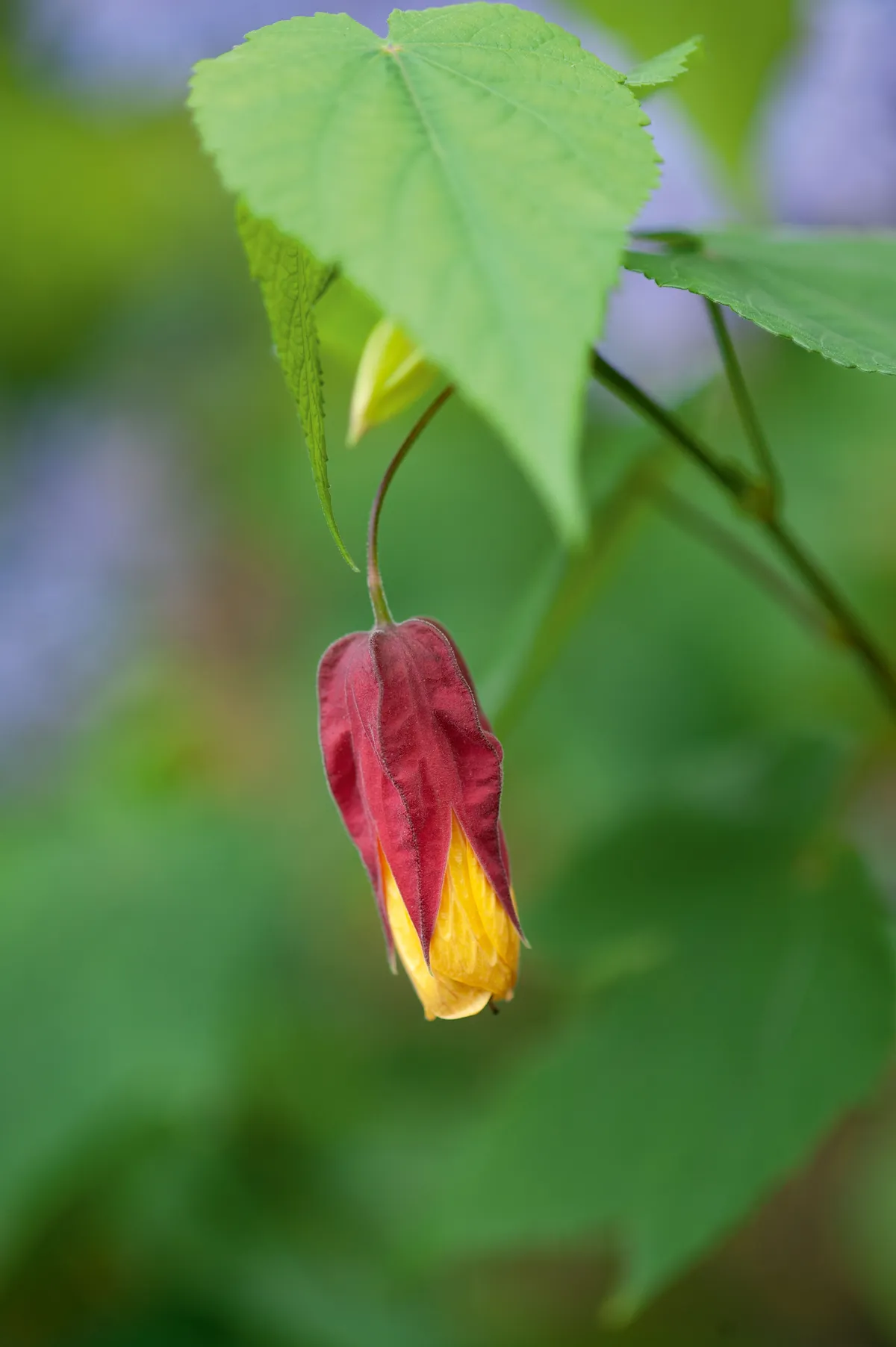
The apricot flowers are topped by dusky-red calyces and dangle from attractive, dark stems. Will survive outdoors in mild areas of the UK.
1.2m x 80cm. AGM. RHS H3, USDA 7a-10b.
Abutilon ‘Victorian Lady’
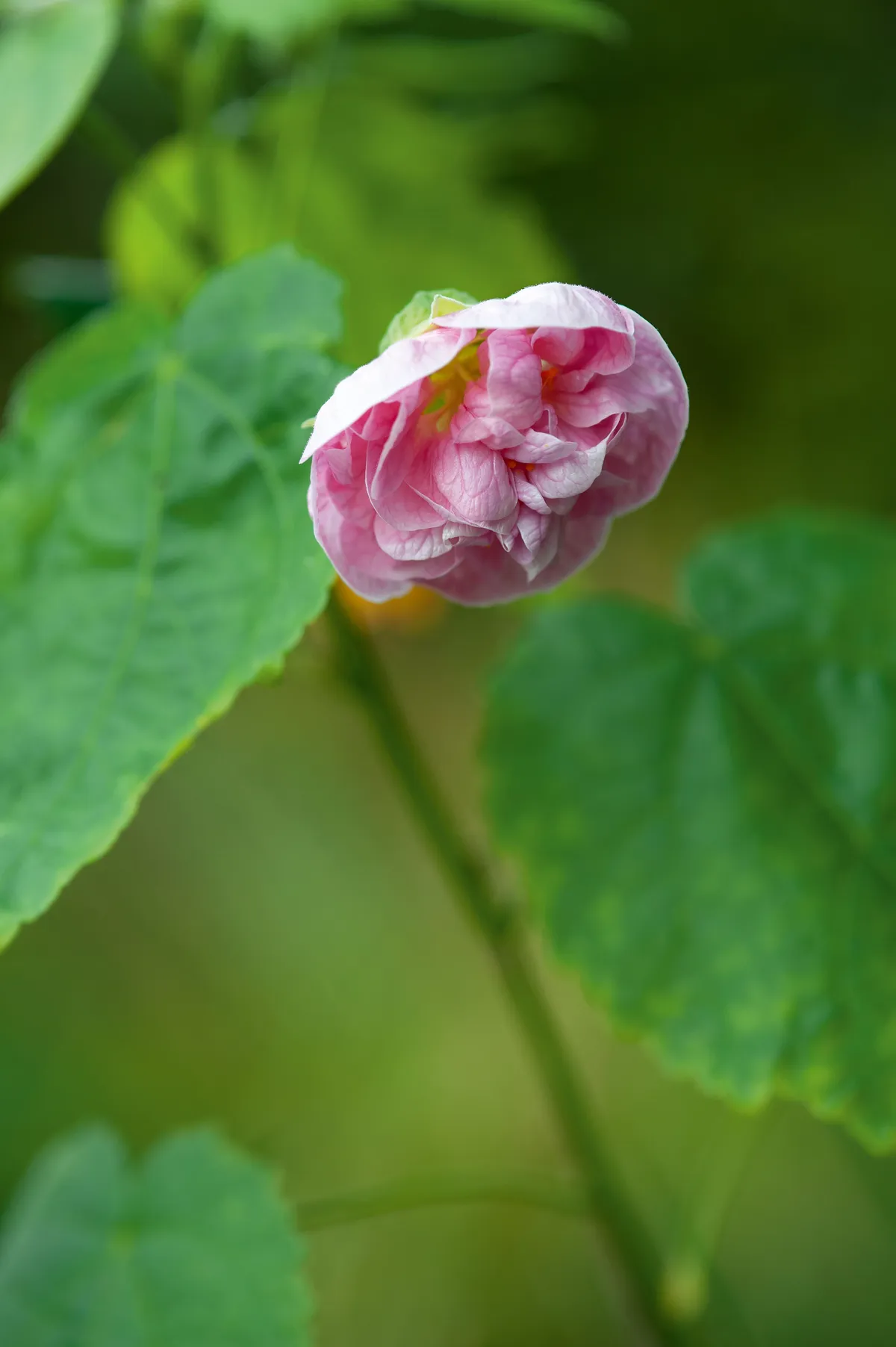
Touted as the only double-flowered abutilon, although it is more that the petals are ruffled than the large (7cm-8cm wide) flowers have a double set of them. Popular in Europe, but can be hard to find in the UK. 80cm x 40cm. RHS H3, USDA 7a-10b.
Abutilon ‘Leila Jackson’
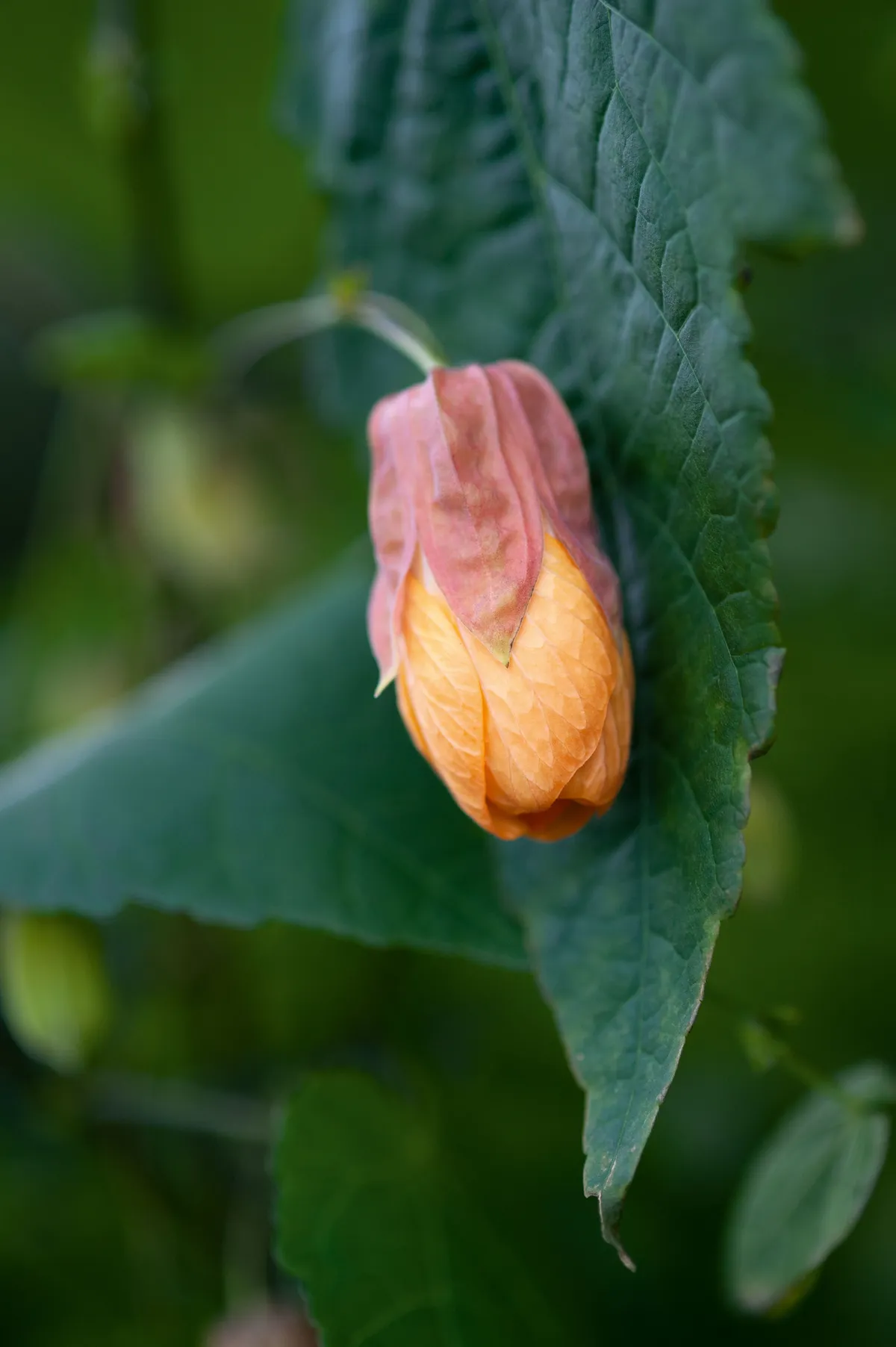
Named for Teri and Eric Turner’s daughter who developed many of their new introductions. Petals are an apricot colour with dark veining. When fully developed they furl outwards to create an open flower. 1.1m x 60cm. RHS H2, USDA 9a-11.
Where to see and buy abutilon
• Burncoose Nurseries Gwennap, Redruth, Cornwall TR16 6BJ. Tel 01209 860316, burncoose.co.uk
• Cotswold Garden Flowers Sands Lane, Badsey, Evesham, Worcestershire WR11 7EZ. Tel 01386 422829, cotswoldgardenflowers.co.uk
• Paddock Plants The Paddock, Upper Toothill Road, Rownhams, Southampton SO16 8AL. Tel 023 8073 9912, paddockplants.co.uk
• Teri and Eric Turner* The Hop Kilns, Green Lane, Bromyard, Herefordshire HR7 4RZ. Nursery no longer open but email eric.teri@btinternet.com to arrange a visit to their collection.
*National Collection holder.
